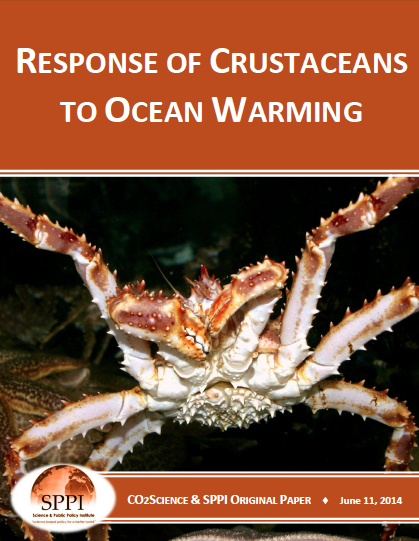News / Science & Technology
Response of Crustaceans to Ocean Warming

According to Storch et al. (2009) , "temperature is often invoked as the main determinant of distribution ranges and boundaries for marine and terrestrial species," and they note the larval stages of many marine species "are more vulnerable to thermal and osmotic stresses than adults." Consequently, they explored the rigidity of this temperature determinant of livable range for the Chilean kelp crab (Taliepus dentatus) in its most temperaturesensitive larval state. Specifically, working with stage zoea I larvae of two populations of the crab-one from Southern Chile (SC, 43°54'S) and one from Central Chile (CC, 33°29'S)-Storch et al. "measured temperature-dependent activity, oxygen consumption, cardiac performance, body mass and the carbon and nitrogen composition in order to (1) examine thermal effects from organismal to cellular levels, and (2) compare the thermal tolerance of larvae from two environmental temperature regimes."
Among many other things, the six researchers report "the thermal tolerance window of zoea from SC was found to be shifted to lower temperatures when compared with those from CC," which could be equally accurately expressed as "the thermal tolerance window of zoea from CC was found to be shifted to higher temperatures when compared with those from SC." Given such, the Chilean and German scientists conclude "the small but clear shift between thermal tolerance windows between populations suggests an optimization of reaction norms and local adaptation in larvae of T. dentatus," noting "this differentiation allows the species to cover a wider range of distribution than when restricted to one and the same thermal window for all populations," which suggests the larval form of the kelp crab is capable of adapting to both higher or lower temperatures relative to those at which it may have lived for long periods in the past.
Read More Here
